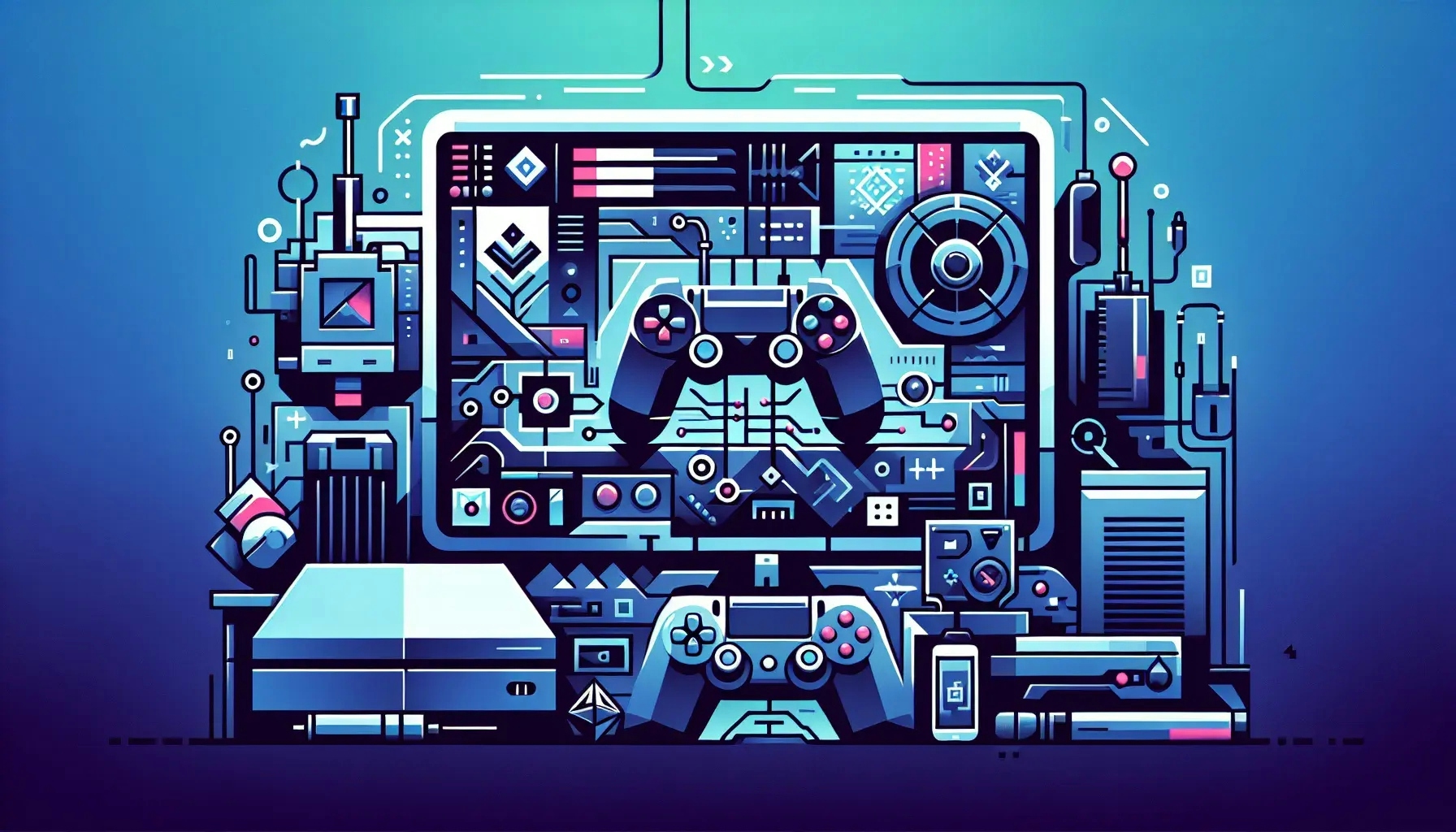Understanding Game Mechanics
ComputerGames.io

Welcome to a deep dive into the world of game mechanics. This blog post will help you unravel the complexities of game mechanics, the invisible gears that drive the gaming experience. Whether you're a seasoned game developer, an aspiring designer, or a curious gamer, understanding game mechanics is crucial. It's the difference between a game that's engaging and one that's quickly forgotten. So, let's embark on this journey to comprehend the heart and soul of every game - its mechanics.
The Essence of Game Mechanics
Game mechanics form the backbone of any game. They are the rules and procedures that guide the player and the game response. From the simple act of moving a character to complex combat systems, game mechanics cover it all.
Understanding game mechanics is akin to learning a new language. It's about understanding the syntax (rules) and semantics (meaning). In games, the syntax includes the rules that govern what a player can do, and the semantics are the outcomes of those actions.
For instance, consider a classic game like chess. The pieces, the board, and the movements constitute the game mechanics. Each piece has a specific way it can move, and these rules guide the gameplay. The strategy, however, is up to the player. This is where the beauty of game mechanics shines. It provides a framework for the player to interact with the game world, but how they do so is entirely up to them.
Categories of Game Mechanics
Game mechanics can be broadly classified into three categories: mechanics that define goals, mechanics that set up challenges, and mechanics that provide interaction.
Goals are the objectives that players strive to achieve. They provide a sense of purpose and direction. In a racing game, the goal is to be the fastest. In a puzzle game, the goal is to solve the puzzle. Goals can be explicit, like rescuing a princess, or implicit, like exploring an open world.
Challenges are obstacles that prevent players from easily achieving their goals. They create tension and excitement. Challenges can take many forms, from enemies to environmental hazards, from time limits to resource scarcity.
Interaction mechanics are the means by which players can interact with the game world. They define the actions players can take, like moving, jumping, shooting, or picking up objects. Interaction mechanics are crucial as they determine how players can overcome challenges and achieve their goals.
The Role of Game Mechanics in Player Engagement
Game mechanics play a pivotal role in engaging players. They create the 'fun' in games. But how do they do this?
One way is through the challenge-reward cycle. Players overcome challenges using the game mechanics, and they are rewarded for it. The reward can be intrinsic, like the satisfaction of solving a puzzle, or extrinsic, like points or power-ups. This cycle of challenge and reward creates a sense of achievement and keeps players engaged.
Another way game mechanics engage players is through meaningful choices. When players can make decisions that affect the game outcome, they feel more invested. For example, choosing which path to take in a maze, which weapon to use in a fight, or which character to develop in a role-playing game.
Balancing Game Mechanics
Balancing game mechanics is a critical aspect of game design. It's about ensuring that no single strategy or tactic dominates the game, making it too easy or too hard.
Balancing is a delicate act. If a game is too easy, players will get bored. If it's too hard, they'll get frustrated. The key is to provide just the right level of challenge. This is where playtesting comes in. By observing players, designers can identify and correct imbalances.
Another aspect of balancing is fairness. In multiplayer games, all players should have an equal chance of winning, regardless of their starting position or sequence of play. This is achieved by designing mechanics that offset any initial advantages or disadvantages.
Innovations in Game Mechanics
As the gaming industry evolves, so do game mechanics. Designers are constantly pushing the boundaries, creating innovative mechanics that provide unique gaming experiences.
One such innovation is the 'rewind' mechanic in games like 'Braid' and 'Prince of Persia: The Sands of Time'. This mechanic allows players to rewind time and correct their mistakes, adding a whole new layer of strategy.
Another innovation is the 'morality' mechanic in games like 'Mass Effect' and 'Fable'. Players' actions affect the game world and how characters react to them, making the gameplay experience more immersive and personal.
The Future of Game Mechanics
The future of game mechanics is exciting. With advancements in technology, the possibilities are endless.
Virtual and augmented reality are opening up new dimensions in game mechanics. They allow for more immersive experiences, where players can interact with the game world in ways previously unimaginable.
Artificial intelligence is another area with huge potential. AI can make games more dynamic and responsive, adapting to players' actions and creating more realistic and unpredictable challenges.
Unraveling the Complexities of Game Mechanics
Understanding game mechanics is a fascinating journey. It's about delving into the heart of what makes games engaging and fun. From the basic rules that guide gameplay to the innovative mechanics that push the boundaries of what's possible, game mechanics are the soul of every game. As technology advances, the future of game mechanics promises even more exciting possibilities. So, whether you're a game designer, a gamer, or just a curious reader, there's never been a more exciting time to explore the world of game mechanics.